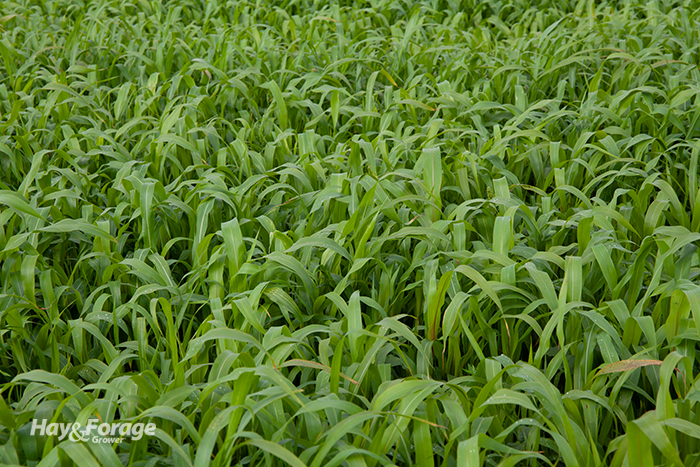
Planting and grazing cover crops after wheat harvest can be a viable way to gain some extra forage for late summer and fall grazing. However, growing conditions, moisture availability, stocking rate, and grazing management will dictate just how effective this practice can be.
In a recent article from Kansas State University, a team of extension specialists note that parts of the High Plains have had adequate moisture so far this season to support substantial cover crop growth following wheat harvest. With that said, cover crops should be seeded immediately after combines are parked to take advantage of these conditions before the soil dries out.
The options abound for cover crop plantings, but certain species are better suited for certain goals. Fortunately, the specialists state that many species recommended for cover crops in their region double as good forage, although some factors of nutritive value and toxicity must be considered.
Sorghums, sorghum-sudangrass, and millets are high nitrate accumulators, the specialists advise. Excess fertilizer and environmental stress can exacerbate nitrate toxicity, so it will be necessary to test these forages before grazing them. Prussic acid toxicity is also a concern in sorghum species, especially in young plants or regrowth and following a freeze.
Your grazing schedule can also influence planting decisions. For example, warm-season forages like sorghum, sorghum-sudangrass, and millet — as well as cowpea, sunn hemp, and even sunflower — can provide biomass for late summer and fall grazing. Forages with good regrowth, like sudangrass and sorghum-sudangrass, could be grazed multiple times, offering feed later into the year if adequate moisture is available.
Be flexible
Cover crop yield can vary. In fact, the specialists point out this can range from 1,000 pounds per acre in dry years to almost 9,000 pounds per acre in wet years.
“Under dryland conditions, forage productivity will vary from year to year, which makes this one of the biggest challenges facing producers who graze cover crops in the High Plains region because stocking rates will need to be adjusted annually,” they write.
The ideal situation would be to have a flexible grazing herd size that can be adjusted from year to year. Since this can be difficult to maintain, the specialists suggest adjusting the number of days a field can be grazed instead. They estimate that farmers can graze cover crops after wheat for about 30 days in most years. Consider this forage a supplement between summer grazing and winter hay feeding rather than relying on it as a guaranteed, long-term feed source.
“In years with minimal precipitation and forage productivity, the best choice might be not to graze at all if your primary goal is soil protection,” the specialists assert. “Ideally, you want to maintain a minimum of 30% ground cover, or approximately 1,000 pounds of forage per acre.”
Be careful
Although cover crops can be utilized for forage, their primary purpose is to protect the soil and improve soil health. In any case, it’s critical to manage grazing in a way that accomplishes those goals.
The advantages of continuous grazing are that no cross-fencing is required and only one water source is needed; however, livestock tend to overgraze cover crops in these systems. Strip grazing is a better approach, and still only requires one water source. In systems where livestock can make multiple passes to graze regrowth, rotational grazing is encouraged.
Once a grazing pattern is determined, the next decision is when to start grazing. The specialists caution grazing up to the first frost, especially if grazing sorghum species. Another option is to delay grazing until after the first hard freeze. In any case, delay grazing for at least seven days after a frost to avoid prussic acid poisoning from these species.
Calculate forage yield during your expected grazing period to determine your stocking rate. Then, estimate how much forage livestock will consume on a daily basis based on body weight and forage quality. For green and actively growing forage, the specialists state that animals can consume 2.5% to 3% of their body weight per day. Also consider how much residue you want to leave in the field and factor that percentage into the equation.
For more information, read the full Kansas State University fact sheet here.

